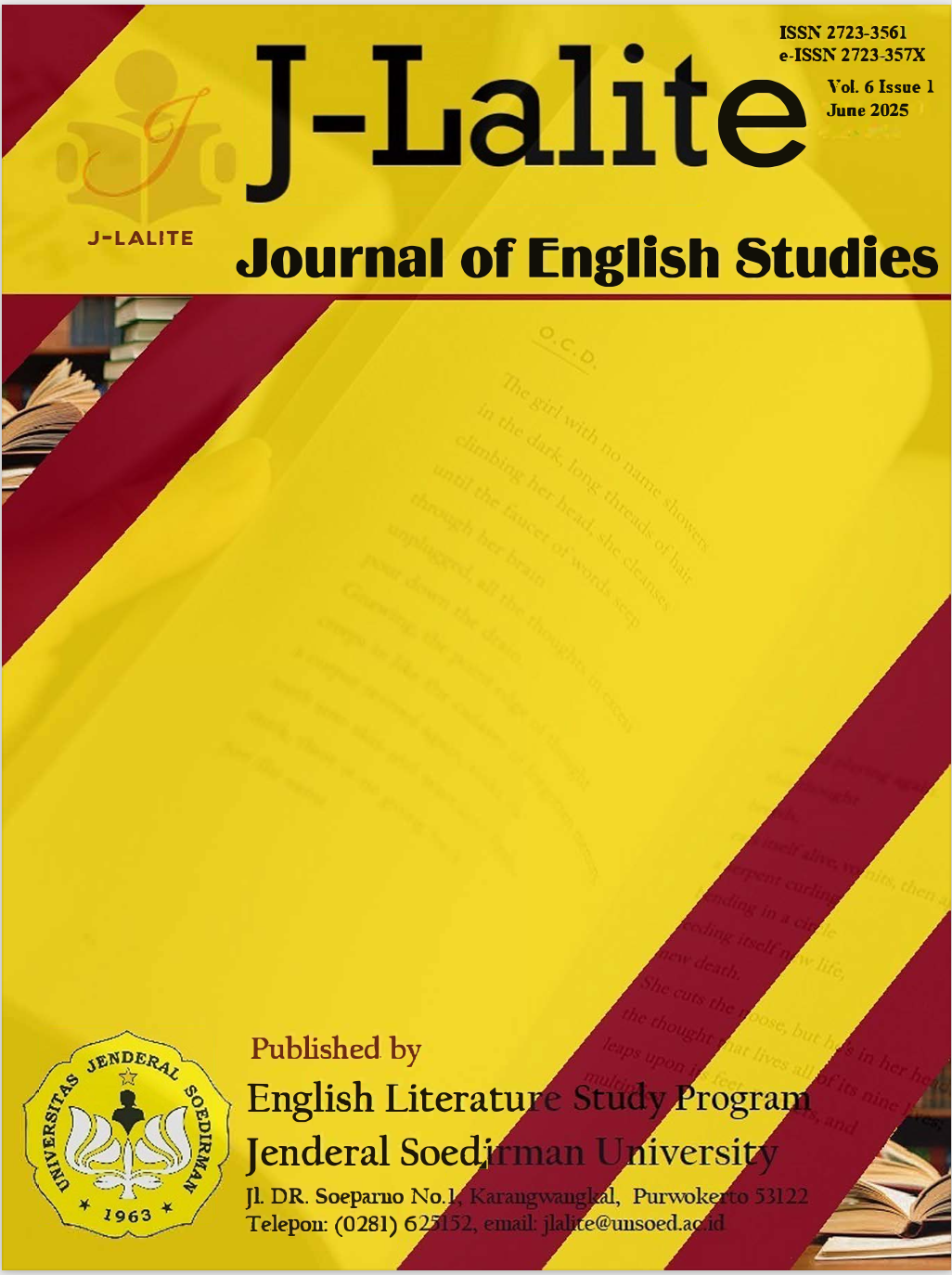Exploring Artaud’s Impact on Beckett’s Act Without Words II: A Study in Theatrical Influence
Abstract
Samuel Beckett’s Act Without Words II, a quintessential example of minimalist theatre, challenges traditional performance paradigm through its reliance on physicality and visual symbolism. This paper explores the profound impact of Antonin Artaud’s dramatic techniques on Samuel Beckett’s theatrical work, specifically within Act Without Words II. Through an analysis of stagecraft – including lighting, movement and object manipulation – this study demonstrates how Beckett was greatly influenced by Artaud. Textual analysis further substantiates the connection between Beckett’s techniques and Artaud’s theatrical vision. The findings revealed the dynamic interplay of light, physical movement, and objects in the performance, which collectively enhance audience engagement and perception. The stark contrast between light and shadow, the characters’ repetitive and ritualistic behaviours, and the strategic use of objects such as the goad and the carrot contribute to the play’s cruel resonance. By immersing the characters in states of physical and psychological struggle, Beckett cultivates a profound sense of shared suffering, compelling the audience to confront their own capacity for empathy. The analysis concludes that the synthesis of Beckett’s minimalist approach and Artaud’s emphasis on the physical and sensory, creates a truly transformative theatrical experience. Through the deliberate subversion of conventional narrative and character frameworks, both authors force the audience to engage with the elemental, unmediated aspects of human experience.
References
Beckett, Samuel (2006). The Complete Dramatic works of Samuel Beckett. London: Faber & Faber.
Bermel, Albert (1977). Artaud’s Theatre of Cruelty. Taplinger Publishing.
Braun, Edward (1982). The Director and the Stage. Cambridge University Press.
Brustein, Robert (1965). The Theatre of Revolt: An Approach to the Modern Drama. Methuen.
Esslin, Martin (1988). Theatre of the Absurd. Penguin.
Fletcher, Beryl (1978). A student’s guide to the plays of Samuel Beckett. London: Faber and Faber.
Gontarski, S. E (2017). “Beckett and the ‘Idea’ of Theatre: Performance Through Artaud and Deleuze.” Beckett Matters: Essays on Beckett’s Late Modernism. Edinburgh University Press, 223–239.
Goodall, Jane (1994). Artaud and the Gnostic Drama. Oxford University Press.
Greene, Naomi (1970). Antonin Artaud: Poet Without Words. Simon & Schuster.
Hannah, D. (2011). Towards an "Architecture of Cruelty": Mining the spatial speech of Antonin Artaud. Architecture and Violence.
Hayman, Ronald (1977). Artaud and After. Oxford University Press
Knapp, Bettina L (1980). Antonin Artaud: Man of Vision. Swallow Press.
Kurmelev, Anton. (2016). “Theater and its Purpose: Antonin Artaud and Tennessee Williams. Procedia”. Social and Behavioral Sciences. Volume 236.
Labelle, Maurice Marc (1980). Alfred Jarry: Nihilism and the Theatre of the Absurd. New York University Press.
Melia, Matthew (2007). Architecture and Cruelty in the writings of Antonin Artaud, Jean Genet and Samuel Beckett. Kingston University, PhD Dissertation.
Morris, Blake (2022). Antonin Artaud. Routledge.
Ponio, Amanda. (2018). The Early Modern Theatre of Cruelty and its Doubles: Artaud and Influence. Germany: Springer International Publishing.
Rapoch, Jeff (2013). The Social Function of Twentieth Century Theatre: Antonin Artaud, Samuel Beckett and Paul Chan. The Ohio State University, PhD Dissertation.
Riffaterre, Michael. (1984). “Intertextual representation: On mimesis as interpretive discourse”. Critical Inquiry, 11(1), 141–162.
Vos, Laurens De (2011). Cruelty and Desire in the Modern Theater: Antonin Artaud, Sarah Kane, and Samuel Beckett. Fairleigh Dickinson, Lanham.

This work is licensed under a Creative Commons Attribution-ShareAlike 4.0 International License.
By submitting the manuscript, the author(s) agreed to these following terms:
(1) The copyright of received articles shall be assigned to J-Lalite: Journal of English Studies as the publisher of the journal. The intended copyright includes the right to publish articles in various forms (including reprint). J-Lalite: Journal of English Studies maintain the publishing rights to the published articles.
(2) Author(s) are permitted to disseminate published articles by sharing the link/DOI of the article at J-Lalite: Journal of English Studies. Author(s) are allowed to use their articles for any legal purposes deemed necessary without written permission from J-Lalite: Journal of English Studies with an acknowledgement of initial publication to this journal.
(3) Authors should sign a copyright transfer agreement when they have approved the final proofs sent by J-Lalite: Journal of English Studies prior to the publication.
(4) User/public use of this website will be licensed to Creative Commons Attribution-ShareALike 4.0 International (CC BY-SA 4.0) License.









.png)
.png)
.png)
.png)




